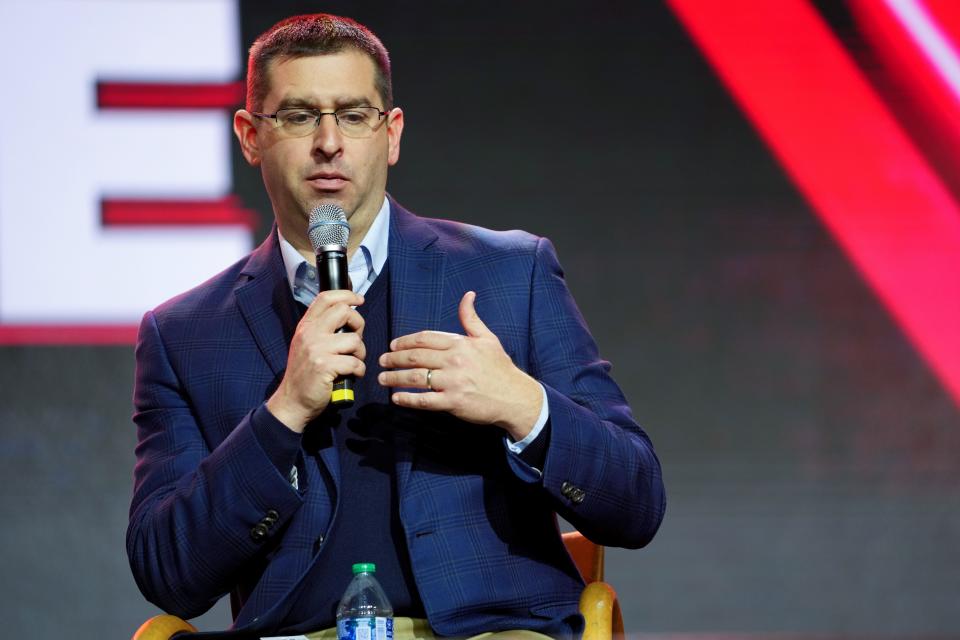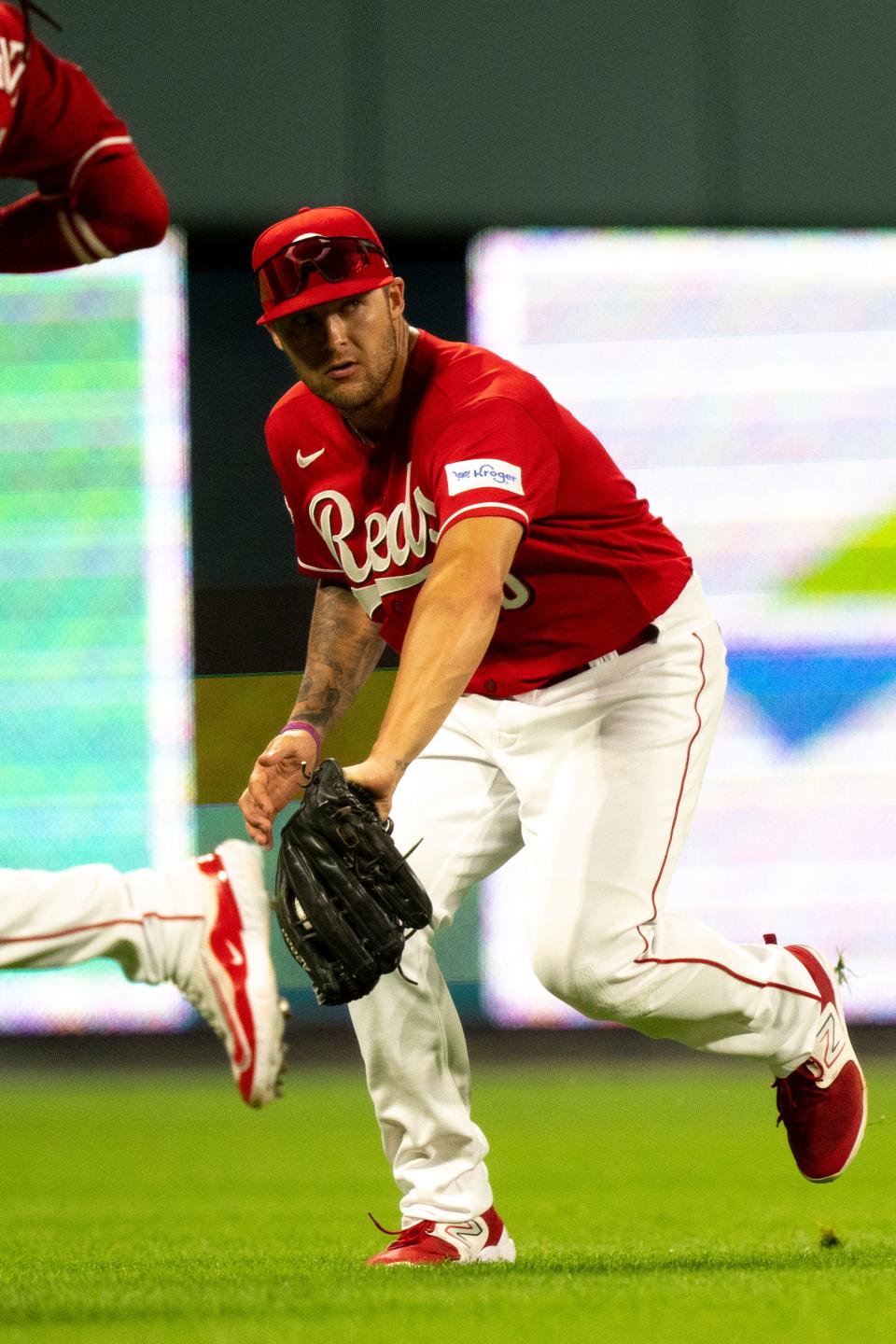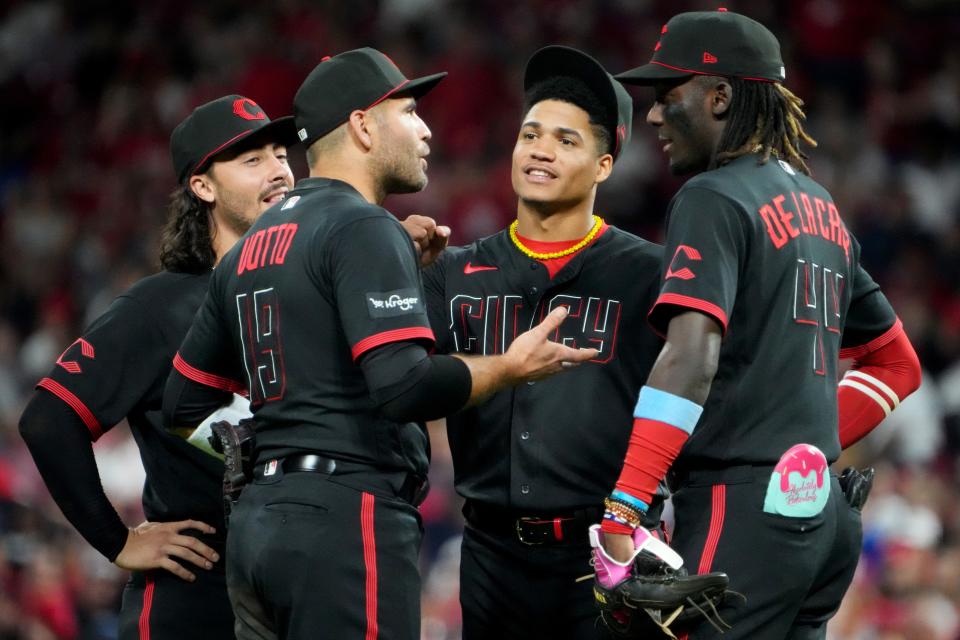How cautionary tale of Nick Senzel informs Cincinnati Reds pursuit of reliable veterans

Before Elly De La Cruz and Matt McLain — and Noelvi Marte and Christian Encarnacion-Strand — there was Nick Senzel.
Drafted second overall in 2016. Futures Game in 2017. Baseball America’s No. 7 prospect in 2018. MLB Pipeline’s No. 6 prospect in 2019 when he made his big-league debut.
Non-tendered by the Cincinnati Reds Friday night after the club was unable to find a taker in trade conversations for the second time in four months.
Reds offseason moves Nick Krall: Jonathan India ‘guy who fits here’; Cincinnati Reds not motivated to trade him
Reds offseason moves Former Cincinnati Reds top prospect Nick Senzel non-tendered by club, becomes free agent
Reds Joey Votto Joey Votto replies to Kevin Kiermaier, pokes fun at himself for not winning Gold Glove
It’s a story almost as old baseball itself — certainly as old as prospect rankings.
It’s also a cautionary tale, maybe more now than ever during a time the game is celebrating another golden age of young (cheap) talent, from rookies Corbin Carroll and Josh Jung in the World Series to Gunnar Henderson and Adley Rutschman with 101-win Baltimore to all those exciting young players behind the Reds’ surprising run into contention.

This time the tale was about Nick Senzel. Next time is it about Marte or CES, or even McLain or De La Cruz?
Nobody can know as the weather turns in November, more than four months before the start of what each hopes will be a first full big-league season.
Certainly the Reds’ bright new generation of players — including a raft of young pitchers — won’t all fall short of expectations.
But just as certain, they won’t all reach those expectations, either. That’s just the nature of the game. History.
“They’re called prospects for a reason,” former Chicago Cubs manager David Ross used to say — and he should know.
Ross was a touted young catcher when he broke in with Dodgers in 2002 but after a promising start to his career in 2002-03 couldn’t hit well enough to earn significant playing time and bounced to the Pittsburgh Pirates and San Diego Padres before landing with the Reds in 2006 in a trade for minor-league pitcher Bobby Basham.
He had his best season for ex-catcher Jerry Narron’s Reds before starting to bounce again. He also persevered to earn 15 seasons in the big leagues, finishing with a home run for the Cubs in a Game 7 World Series victory that ended the most famous championship drought in American team sports.
That’s not to say Senzel or any of the current crop of young Reds is headed down a similar path — or to say necessarily anything specific about any of them.
It is a reminder that player development is not linear.
And for those rightfully optimistic fans who jumped to spend large coin on all that Elly, CES and McLain gear, it’s a reminder why Reds president Nick Krall is seriously pursuing veteran starting pitching, proven bullpen help and, yes, hitters, this winter.
It’s why — even with all that sensational young infield talent — he met with the agent of switch-hitting corner infielder Jeimer Candelario.

It’s tempting to do the math and say the Reds have plenty of infielders — seven on the big-league roster, in fact. But five were rookies in 2023, four of whom were in the minors on May 14.
It’s tempting to look at the same math and say the Reds have their Big Three starters expected to return healthy next spring to count on, along with 2023 rookie success stories Andrew Abbott and Brandon Williamson — along with rushed-for-need rookies Carson Spiers, Lyon Richardson and Connor Phillips.
Combine all that math with the math on Bob Castellini’s payroll abacus and it might be tempting to say the Reds don’t need much at all this winter.
Until you do the roster math on service time and search in vain for large sample sizes to pin 2024 hopes on — after coming agonizingly close to making the playoffs in ’23.
“Scouts say you don’t get eights in the minor leagues; you only get eights in the big leagues,” Krall said, referring to the extreme top scouting score on player tools.
“The good thing is we had all of our players come up and perform in the big leagues,” he said. “But you still have to deal with young players. You still have to deal with where they are. Players come up and sometimes they have a lot of success. Sometimes they don’t. Sometimes they take a little bit to get that success.”
Krall said he has more payroll flexibility than he had last year (Joey Votto’s departure represents a net of $18 million gained, alone).
And after refusing to pay the high asking prices at the summer trade deadline for starting pitching, he’s operating at full speed in that sector of the market in particular.
Asked Friday what kind of pitcher he prefers, Krall quipped, “I’d like a good one.”
Better make it two.
This article originally appeared on Cincinnati Enquirer: How Nick Senzel's departure informs Cincinnati Reds' offseason plans

